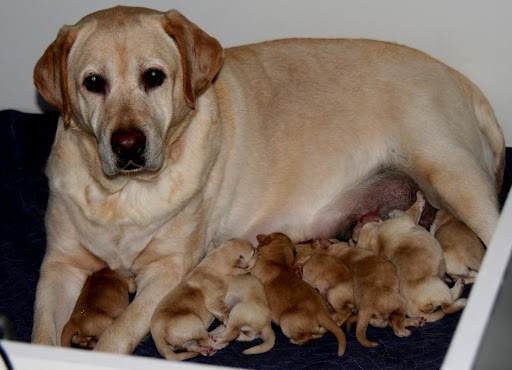As one of the most popular dog breeds, Labrador Retrievers have been ruling the United States’ popularity charts since the 1990s. Because they are so in demand, there’s no dearth of Labradors’ backyard breeders. Consequently, you won’t have to work so hard to get a stud dog for your female Labrador.
However, before you plan to breed your Labrador, you need to consider many factors to protect your female dog’s health. One of those factors is how frequently you should get your dog pregnant. And that is precisely what we are going to deal with in this article.
How frequently can a Labrador retriever breed?
First of all, you must note a difference between the word ‘can’ and ‘should.’ As far as the former is concerned, your Lab can conceive every time it mates during the oestrous season. If you consider your dog’s heat season, your Labrador’s frequency of getting pregnant will be twice a year. In short, your dog can conceive every six months.
However, if you let your Lab conceive every six months, it will become terribly weak. Pregnancy entails a lot of bodily changes. Then, there is this painful task of delivering a baby. Hence, you must let your Lab rest for at least one year until its body is strong enough to conceive another litter.
What is the best age to start breeding for a Labrador retriever?
Most veterinaries suggest that you must not let your dog conceive unless it has had at least two heat cycles. In other words, your female must not breed before 18 to 24 months. However, if you want a straightforward answer and not an approximation, then the response will be two years. You must not allow your dog to conceive before it has reached the age of two years.
If you start breeding your female Lab before the prescribed age, it can suffer from several health complications. Most of them are pregnancy-related. You must have heard of dogs requiring the Caesarian section. Even though Labradors being large dogs, do not face such problems, you can never guarantee an early pregnancy.
Then there are probabilities of developing joint-related issues. As your dog is a young one, its nutritional needs have still not been satisfied enough to let it take the extra weight of conceiving a baby.
Another prominent reason for not breeding your dog before the prescribed age is health records. You cannot get your dog’s overall health records unless it has reached 2 years. Health screening is crucial because you don’t want your female to pass on its diseases to its young ones.
How frequently should a Labrador retriever breed?

Unfortunately, there is no general consensus among breeders on this question. If you conduct a survey on this issue, you will find two polar opposite answers related to this question. Let us take a detailed look at those two responses.
Missing a heat cycle
Most veterinaries and breeders opine that you should prevent your dog from conceiving for at least one heat cycle or one year after the last delivery. This belief is roughly based on the United Kingdom’s kennel guidelines.
This argument’s rationale is that your female needs some time to recuperate from the challenges it faced during its last gestation period.
Even though some studies related to this belief exist, most of them opine that the theory is overrated. Such a resting period’s benefits are much lesser for both dogs and dog owners than one might assume.
Back to back mating
The other side of this debate argues that missing heat cycles can cause a female dog to develop adverse reproductive problems like cancer and pyometra (infection in the uterus). Therefore, they must not miss a heat cycle after the last delivery.
This argument was especially expounded by Dr Kate Schoeffel in dog breeders’ journal (not a scientific one). However, with a detailed perusal of her analysis, one can easily argue that the symptoms enlisted by her like weight gain, mammary, and lactates growth and nesting behavior do not always imply reproductive problems. Even pseudopregnancies entail these symptoms. Before making such prodigious assumptions, one must remember that all female dogs missing heat cycles go through pseudopregnancy.
Therefore, even this argument cannot be considered fully valid.
Conclusion
Truth to be told, there is no precise answer to this question of how frequently your dog should conceive. As far as the expert breeders’ opinions are concerned, they are sharply divided on this issue. Some of them prescribe back to back mating. While others recommend a period of rest after one delivery.
Moreover, your dog’s mating frequency will also be determined by your state’s pet laws, which differ from country to country. For example, there is no direct reference to restricting back to back mating in the United States. There is a term called “close mating,” but that is limited to only 18 weeks. Practically, it is not viable as there is a difference of 6 months between each mating season.
On the other hand, in the United Kingdom, limitations are imposed on the female dog’s age and the number of litters it can produce. Currently, a female dog can have not more than four litters of puppies. Among these four litters, there should be at least one year difference between the two litters.
However, almost all breeders and Kennels adhere to some specific rules related to breeding.
- Getting the health records of the stud dog before deciding to let your Labrador mate with it.
- Ascertaining that the male Labradors’ age is not more than 7 years. This age limit applies to your female Lab as well.
- Ensuring your dog’s physical readiness by running a thorough health check-up before allowing it to conceive.
Table of Contents
